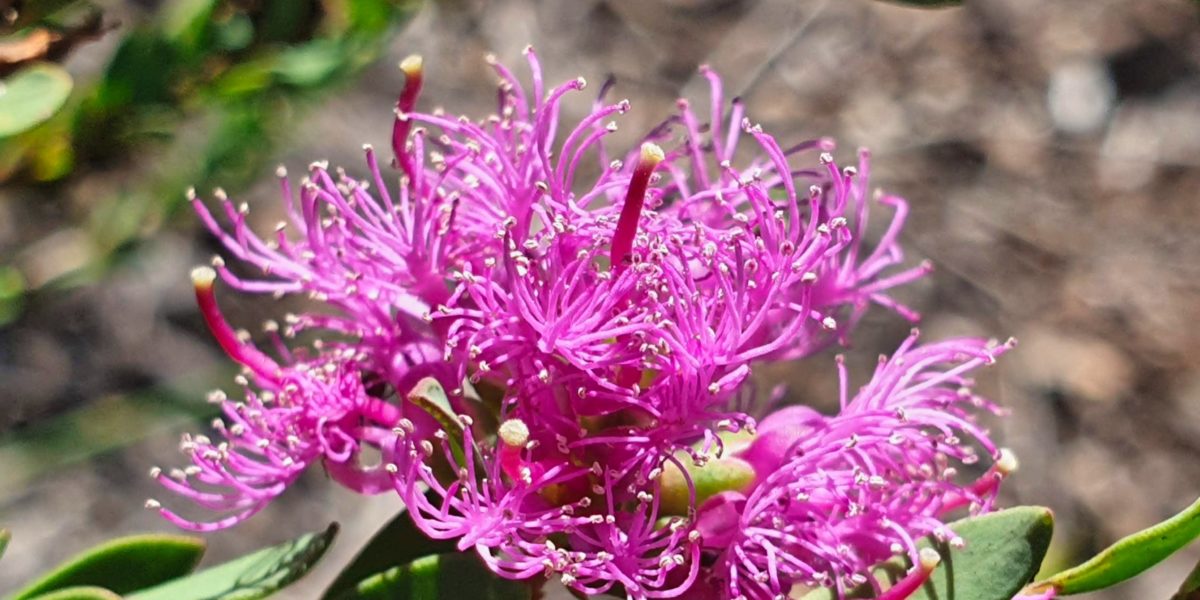
Melaleuca thymifolia
March 31, 2019
Melaleuca thymifolia is a low, spreading shrub which grows to a height of about 1.0–1.5 m (3–5 ft) with grey, corky bark, glabrous foliage and arching branches. Its leaves are arranged in alternating pairs (decussate) so that they make four rows of leaves along the stem. The leaves are 5–15 mm (0.2–0.6 in) long, 1.0–3.5 mm (0.04–0.1 in) wide, flat, elliptic in shape with a tapered end and often have their upper surface almost parallel to the stem.
The flowers are a shade between pink and deep purple and are arranged in heads, sometimes at the ends of branches which continue to grow after flowering, and sometimes on the sides of the branches. The heads contain 2 to 10 individual flowers and are up to 25 mm (1 in) in diameter. The stamens are arranged in five bundles around the flower, each bundle containing 30 to 60 curved stamens. Flowering occurs over a long period, mostly in spring but also at other times of the year. Flowering is followed by fruit which are woody cup-shaped capsules, 3–5 mm (0.1–0.2 in) long and wide. The fruit have five persistent teeth around the rim.